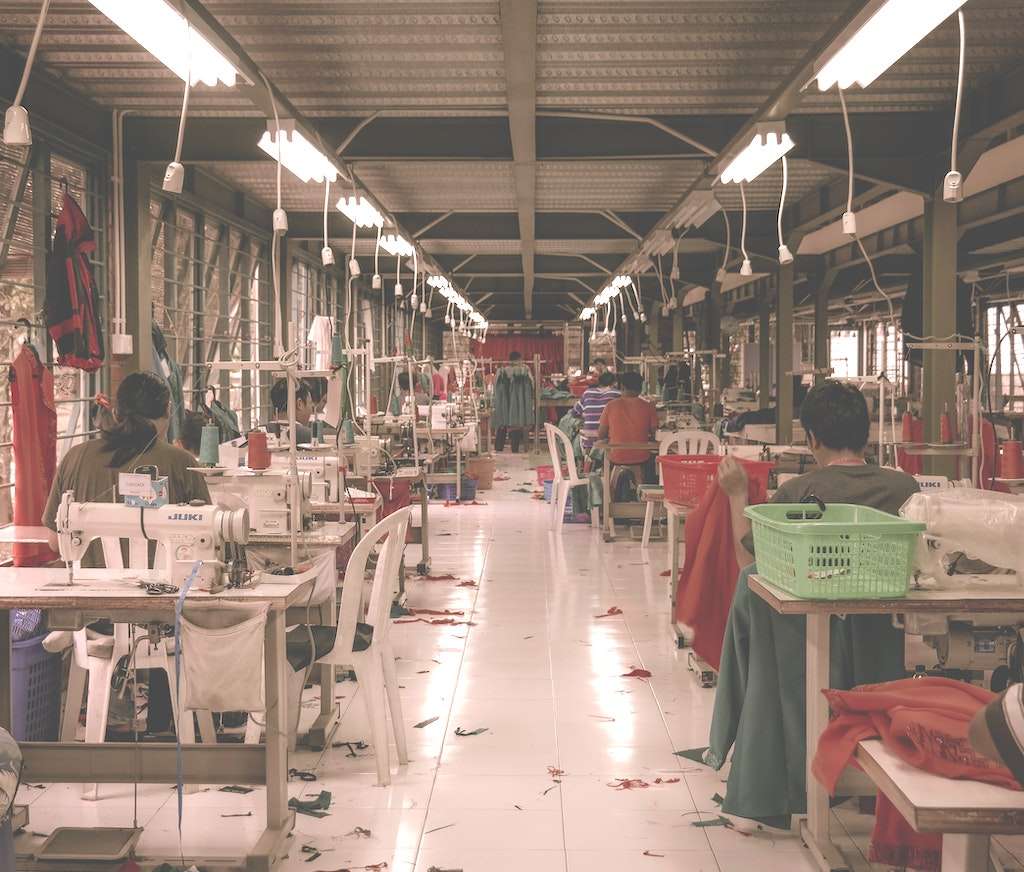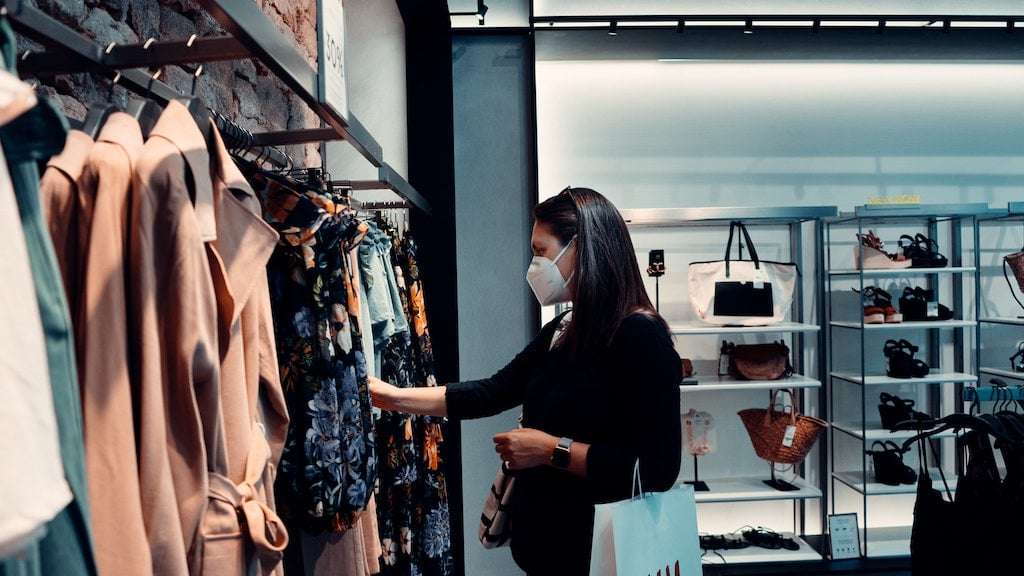While still relatively new, Shein has quickly become the shiniest jewel in fast fashion’s crown. But can it and its competitors survive?
In recent months, it has been virtually impossible to avoid Shein. The China-based clothing juggernaut holds the biggest fast fashion market share in the U.S. It also sells 30,000 items per day in the U.K., and it’s the number-one shopping app in Australia.
Ultimately, Shein represents a new kind of retailer; a leap from fast fashion to ultra-fast fashion.
But as more reports reveal ethical and environmental atrocities associated with the industry, and the cost-of-living crisis bites consumers, how long can Shein—together with rivals including Boohoo, Zara, and ASOS—really stick around? And, are new initiatives, like resale and repair platforms, enough to save its future?
The human cost of ultra-fast fashion
Brands like Shein rely heavily on social media algorithms to predict what consumers want from them. Their target audiences are young, usually Gen-Z, and often TikTok obsessives. Their formula seems to work. At the time of writing, the hashtag #sheinhaul (which sees users review piles of purchases from the retailer) has 7 billion views. And earlier this year, the retailer was valued at $100 billion USD.
But all of this growth comes with a cost. In a recent documentary for the U.K.’s Channel 4, Shein was accused of paying workers just 3 pence for each garment they produce. It also alleged that factory workers were forced to work up to 18 hours a day, seven days a week. They had only one day off per month.

In response to the documentary, Shein claimed that it was “extremely concerned” by the allegations. It added that it was requesting information from Channel 4 so that it could investigate further. But this is far from the first time claims of this nature have surfaced around the brand. Earlier this year, investigators found that Shein’s factories (which it does not own or control) had bars on the windows, blocked hallways, and no fire exits.
Shein isn’t alone in exploiting human beings to produce fast, cheap fashion for the masses. The problem is rife across the industry, and it isn’t a secret either. In 2011, Brazil’s ministry of labor investigated Zara after its garment workers in the country were found in dangerous conditions, sewing for 12 hours a day, and earning as little as $156 per month. In 2020, another investigation accused Boohoo of paying garment workers in Pakistan just 29 pence an hour.
Fast fashion’s environmental nightmare
All of this already paints a pretty gruesome picture of one of the biggest industries in the world. But it gets worse. All of the clothes it produces (in just one year, Shein added 1.3 million new items to its website) are polluting the planet, too.
The global fashion industry contributes 10 percent of annual greenhouse gas emissions. It also uses up valuable resources, like land and water, and pollutes rivers and waterways. Plus, it produces tons of clothing waste that, inevitably, ends up in landfills.

In fact, it’s estimated that every single second, one garbage truck of clothes turns up at the landfill. And because most of that is made with plastic-derived polyester (a favorite of fast fashion brands because it’s cheap and durable), it doesn’t biodegrade. Studies have suggested that it can take up to 200 years for one polyester shirt to break down.
And, even then, it doesn’t really go away. All of that just becomes microplastics, leaching into the soil.
Does fast fashion have a solution to its problems?
There’s no denying it, fast fashion has some pretty big problems to solve if it wants to stick around. The market is already showing signs of trouble. Over the last year, ASOS share prices dropped by 80 percent. Boohoo has also canceled orders over falling demand, and there have been reports that Shein’s colossal $100 billion April valuation may have already come down to $85 billion at the most.

The ongoing cost-of-living crisis and inflation are at the top of the blame list. But it’s worth considering, can they keep coming back from the brink when their biggest consumer base is also becoming the most socially progressive and environmentally-conscious generation yet?
Earlier this year, one study found that in the U.S., Gen Z is the most worried of all the generations about global warming. Together with Millennials, they are also the most concerned about having a negative impact on the future of the planet. This is reflected in their social media of choice. TikTok hashtags #climatechange and #climatecrisis have more than 3 billion views and 550 million views respectively.
Enter: Resale
Shein’s acknowledgment of Channel 4’s documentary indicates that it knows it can’t get away with laying low over its controversies anymore. Perhaps that’s why, just a few days after the exposé was released, the brand launched its first-ever resale platform, where customers can buy and sell old Shein garments.
“At Shein, we believe that it is our responsibility to build a future of fashion that is equitable for all, while also accelerating solutions to reduce textile waste,” said the brand’s head of ESG, Adam Whinston, in a statement.

It’s not the first to do so. Zara also just entered the pre-loved chat with its own platform, which helps consumers either resell their items or send them for repair. Boohoo has also indicated it plans to do the same thing. And ASOS hosts a reclaimed vintage section on its site for “repurposed clothing and deadstock.”
But while all of this may go a little way towards reducing waste, many argue it is nothing but a drop in the ocean when it comes to creating real change in the industry.
Fast fashion isn’t made to last
Venetia La Manna, a sustainable fashion advocate, pointed out one key problem with Shein’s plan (and others who are trying the same thing). The quality of fast fashion just isn’t good enough for constant resale. After all, it’s not made to last. It’s made to maximize profit as much as possible, as quickly as possible.
“Who can make 500 items a day in a way that is built to last?” La Manna told Vogue Business.

“Without a commitment to producing fewer garments, we have an ever-increasing amount of fossil fuel-derived clothing, made by people who aren’t earning a fair living wage,” continued La Manna.
“[It leaves] more citizens feeling deflated after the dopamine hit of a new purchase has worn off, with the garments shedding microfibres into our oceans and waterways, heading to landfill and polluting communities in the Global South,” she added. “All so the greedy CEOs and top executives can make a quick buck.”
While they’re launching resale platforms left, right, and center, none of these fast fashion brands have pledged to reduce production. And that’s the only promise that really counts when it comes to protecting people and the planet. Without it, a resale platform looks less like credible action and more like a greenwashed attempt to keep young planet-conscious teens buying fast fashion.
Related on Ethos:


